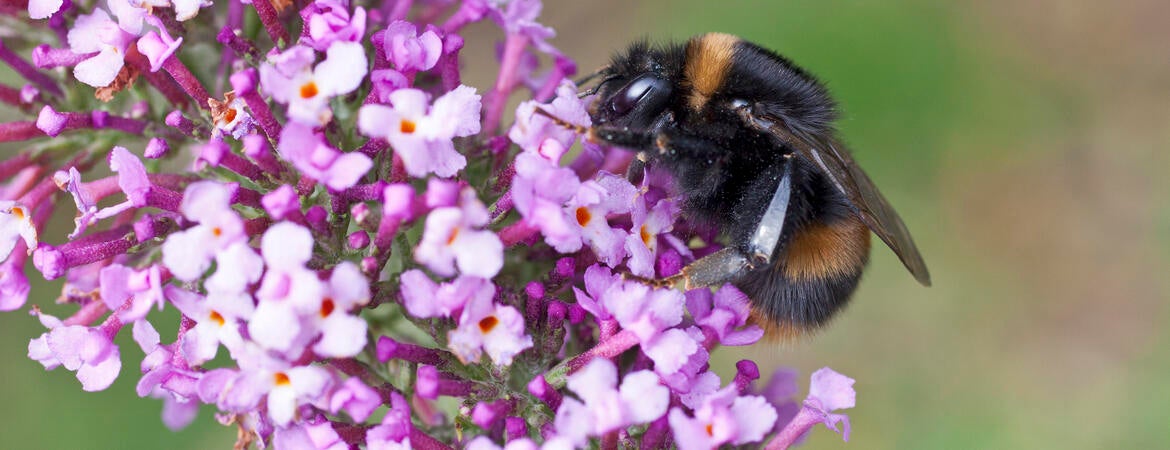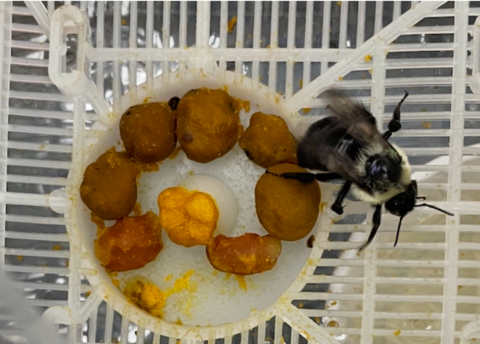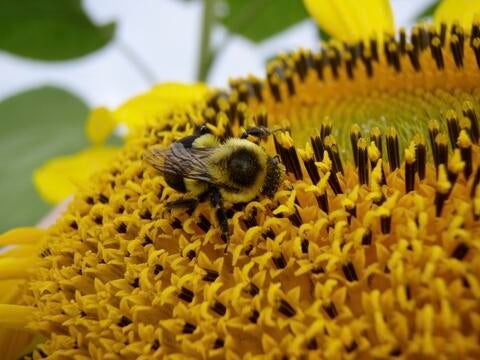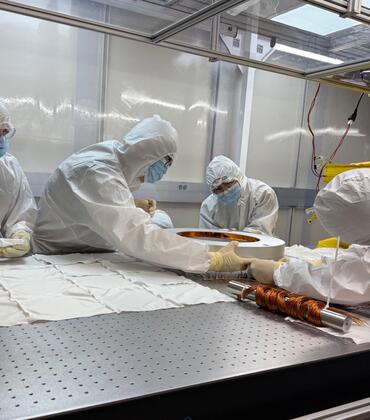
Some queens don’t rule nonstop. A new study from the University of California, Riverside shows that even bumble bee queens, the sole founders of their colonies, take regular breaks from reproduction—likely to avoid burning out before their first workers arrive.
In the early stages of colony building, bumblebee queens shoulder the entire workload. They forage for food, incubate their developing brood by heating them with their wing muscles, maintain the nest, and lay eggs. It’s a high-stakes balancing act: without the queen, the colony fails. Yet, researchers noticed an intriguing rhythm: a burst of egg-laying followed by several days of apparent inactivity.
“I saw these pauses early on, just by taking daily photos of the nests,” said Blanca Peto, a doctoral student in entomology at UC Riverside and lead author of the new study. “It wasn’t something I expected. I wanted to know what was happening during those breaks.”
The findings are detailed in a paper published in BMC Ecology and Evolution.
To find out what triggered the pauses, Peto monitored more than 100 queens over a period of 45 days in a controlled insectary. She documented each queen’s nesting activity, looking closely at their distinctive clutches—clusters of eggs laid in wax-lined “cups” embedded in pollen mounds. Across the population, a pattern emerged: Many queens paused reproduction for several days, typically after a stretch of intense egg-laying.
The timing of these pauses appeared to align with the developmental stages of the existing brood. To test this, Peto experimentally added broods at different stages—young larvae, older larvae, and pupae—into nests during a queen’s natural pause. The presence of pupae, which are nearly mature bees, prompted queens to resume egg-laying within about 1.5 days. In contrast, without added broods, the pauses stretched to an average of 12.5 days.
This suggests that queens respond to cues from their developing offspring and time their reproductive efforts accordingly.
“There’s something about the presence of pupae that signals it’s safe or necessary to start producing again,” Peto said. “It’s a dynamic process, not constant output like we once assumed.”
Eusocial insects, including bumble bees, feature overlapping generations, cooperative brood care, and a division of labor. Conventional thinking about these types of insects is that they’re producing young across all stages of development. However, Peto said this study challenges that conventional thinking about bumble bees, whose reproductive behavior is more nuanced and intermittent.
“What this study showed is that the queen’s reproductive behavior is much more flexible than we thought,” Peto said. “This matters because those early days are incredibly vulnerable. If a queen pushes too hard too fast, the whole colony might not survive.”
The study focused on a single species native to the eastern U.S., but the implications could extend to other bumble bee species or even other eusocial insects. Queens in other species may also pace themselves during solo nest-founding stages. If so, this built-in rhythm could be an evolutionary trait that helps queens survive long enough to raise a workforce.
Multiple bumblebee populations in North America are declining, largely due to habitat loss, pesticide exposure, and climate stress. Understanding the biological needs of queens, the literal foundation of each colony, can help conservationists better protect them.
“Even in a lab where everything is stable and they don’t have to forage, queens still pause,” Peto said. “It tells us this isn’t just a response to stress but something fundamental. They’re managing their energy in a smart way.”
This kind of insight is possible thanks to patient, hands-on observation, something Peto prioritized in her first research project as a graduate student.
“Without queens, there’s no colony. And without colonies, we lose essential pollinators,” Peto said. “These breaks may be the very reason colonies succeed.”
(Cover image: Liz Leyden/iStock/Getty)





